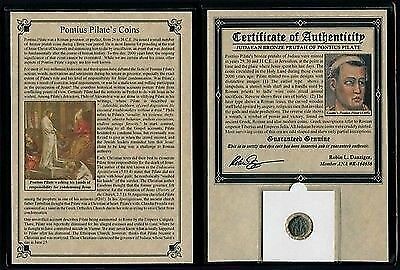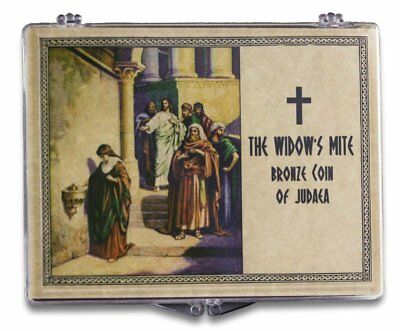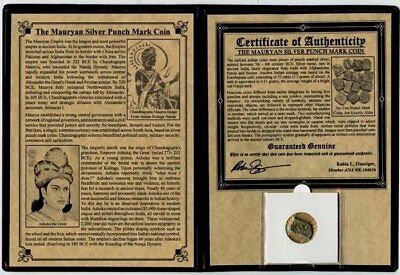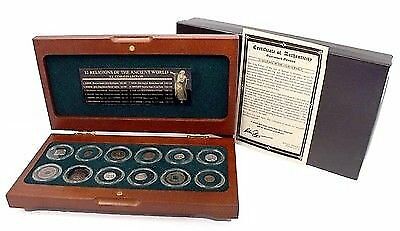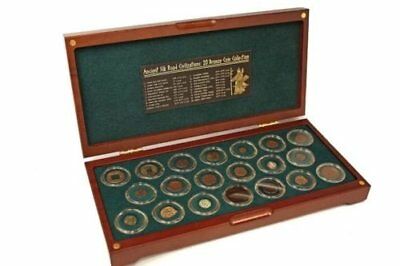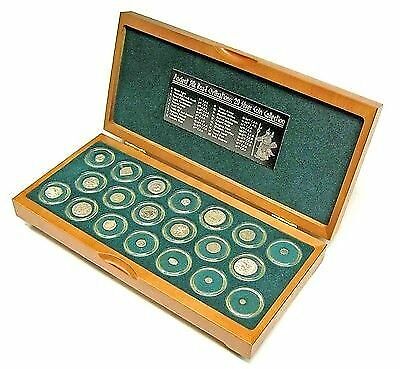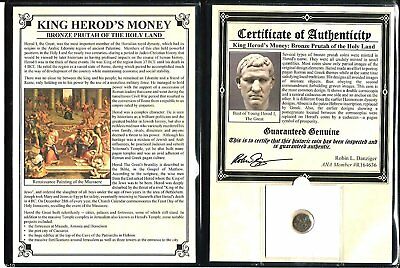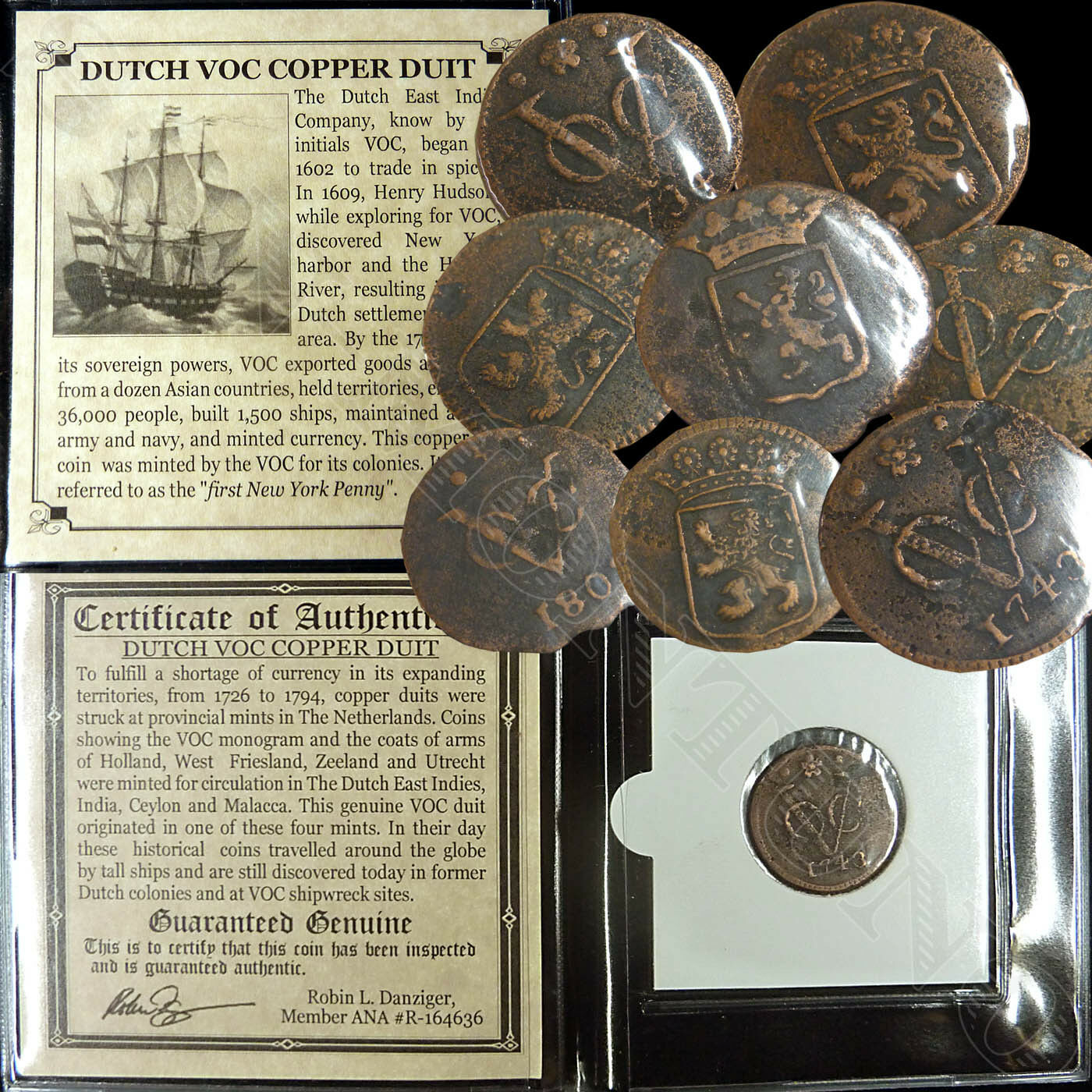-40%
12 Religions Of The Ancient World: 12 Coins In Beautiful Wood Presentation Box
$ 190.81
- Description
- Size Guide
Description
12 Religions Of The Ancient World: 12 Coins In Beautiful Wood Presentation Box.This collection of ancient coins represents the history of the 12 most influential religions of the ancient world.
What is the meaning of life? Why are we here? Why does Fortune smile on some of us, while others seem cursed? What happens to our souls when we die? Do we have souls at all? Finding satisfactory answers to these existential questions consumed the intellectual energy of our ancestors—just as it consumes us to this day. The long history of the rise of human civilization cannot be understood without delving into the universal quest of every culture in every corner of the globe to comprehend and master interactions with others and also with the natural world. Just as in today’s societies, virtually all ancient cultures devised spiritually based principles that provided explanations of the unexplained and formed the basis of individual behavior and social norms. Many have survived and still thrive today. This remarkable collection pays tribute to 12 of the most significant religions of the ancient world.
1. Jainism, Mauryan Empire, karshapana.
The Jain faith is among the oldest known religions—perhaps as ancient as the Indus Valley civilization itself—and is based on the concept of salvation through nonviolence. By the time the Mauryan Empire issued these coins in the 4th century BCE, Adinatha, the founder of Jainism, was already being worshipped as a god. Material Diameter /Weight Obverse Reverse 2. Judaism, A. Jannaeus, lepton Bronze 11-13 mm / 0.3-1g Anchor Star Image shows typical coins for illustration purpose. Coins in the set will vary. Judaism evolved around the sixth century BCE, a way of life built around the covenant God made with the prophet Abraham in circa 2000 BCE. Judaism is a tradition grounded in the religious, ethical, and social laws as they are articulated in the Torah — the first five books of the Hebrew Bible. This bronze lepton is from the Second Temple period, before the destruction of Jerusalem in 70 CE. Material Diameter /Weight Obverse Reverse 3. Hellenistic Polytheism, Nicaea, AE Bronze 17-19.5 mm / 2-4.5 g Portrait Assortment Image shows typical coins for illustration purpose. Coins in the set will vary. 3. The ancient Greeks worshipped a panoply of gods, including Zeus, Hera, Athena, and Apollo. Hellenistic polytheism survived into the Roman Empire before petering out after the reign of Constantine the Great, a century after these bronze coins were minted in Nicaea. Material Diameter /Weight Obverse Reverse 4. Arianism - Roman Emp. Valens, nummus Bronze 16.5-19.5 mm / 2-3.5 g Portrait of emperor Assortment Image shows typical coins for illustration purpose. Coins in the set will vary. 4. Named for its founder, the thirdcentury Alexandrine monk Arius, Arianism is a heretical Christian doctrine that repudiates the Trinity, instead proposing that Jesus Christ is subordinate to God the Father. This was a popular and controversial strain of Christianity during the early years, as during the reign of the Eastern Roman Emperor Valens. Material Diameter /Weight Obverse Reverse 5. Zoroastrianism - Indo-Sassanian, drachm Silver 13 - 18 mm / 3.9 - 4.5 g Indo - Sassanian bust Fire alter Image shows typical coins for illustration purpose. Coins in the set will vary. 5. Zoroastrianism has its roots in the ancient Persian Empire, when the philosopher Zoroaster—also known as Zarathustra—fused the two chief Iranian deities into one god, Ahura Mazda. The first monotheistic religion, Zoroastrianism influenced all subsequent monotheistic faiths. This silver drachm was minted by the Sassanid Dynasty and dates to the tenth century CE. Material Diameter /Weight Obverse Reverse 6. Hinduism - Chola-Rajaraja, massa Bronze 18 - 20.3 mm / 3.6 - 4.6 g Seated king Standing king Image shows typical coins for illustration purpose. Coins in the set will vary. 6. The Hindu religion is based on the concepts of samsara (the cycle of rebirth, or reincarnation) and karma (the universal law of cause and effect). Hindus believe that our souls are reincarnated many times, rising or falling on the cosmic scale depending on how we lived in our current life. At the highest level, we achieve nirvana, or extinction, and cease to exist. This is a bronze massa, one of the Rajaraja series of coins struck by the Cholas between 985 and 1014 CE. 7. The ancient tradition of Taoism is a philosophy and religion founded in China, and elucidated in two books: the Tao Te Ching and the Chuang-tzu. Some of its practices, especially Tai Chi Chuan, Qigong, and martial arts, have achieved worldwide renown. Taoism was practiced during the Song Dynasty, when these bronze cash coins were minted in the eleventh century. Material Diameter /Weight Obverse Reverse 9. Islam - India Sultans of Delhi, 1/2 tanka Billon 14-18 mm / 3.2-3.5 g Ruler's titles Caliphs, mints and dates Image shows typical coins for illustration purpose. Coins in the set will vary. 9. Islam means submission. The most recent of the three major Abrahamic faiths, Islam is based on the teachings of the Prophet Muhammad as compiled in the Koran. Muslims gather at mosques to pray to Allah, whom they regard as the one true god. The Five Pillars of Islam include profession of faith, ritual prayer, charity, fasting, and a pilgrimage to the holy city of Mecca. The two branches of Islam are Sunni and Shiite. The religion spread quickly across Asia, Africa, and Europe after the seventh century. These silver halftankas were struck by the Sultans of Delhi, in India. Material Diameter /Weight Obverse Reverse 8. Christianity- Byzantine Empire, trachy Bronze 20.5-29.5 mm / 2.2-4.3 g Christ seated Virgin or Manuel facing Image shows typical coins for illustration purpose. Coins in the set will vary. 8. Christianity as a religion is based on the life and teachings of Jesus of Nazareth, heavily influenced by the writing and preaching of St. Paul the Apostle. The three major branches of Christianity are Roman Catholicism, Eastern Orthodoxy, and Protestantism, with numerous subcategories. The first Christian emperor of Rome, Constantine the Great, was responsible for much Church doctrine, including the observation of the Sabbath on Sunday rather than Saturday. This twelfth-century Byzantine aspron trachy features a portrait of Jesus Christ. Material Diameter /Weight Obverse Reverse 10. Shamanism - Mongol Empire, fals Bronze 15.5-30 mm / 2.5-4.5 g Mint names, family titles Dates and declaration of faith Image shows typical coins for illustration purpose. Coins in the set will vary. 10. Shamanism has been described as “a technique of religious ecstasy.” Practitioners take on altered states of consciousness in order to commune with the spirit world. The oldest example of shamanism in Eurasia is in the Mongol Empire. The Secret History of the Mongols details shamans of both sexes acting as exorcists, healers, seers, rainmakers, and officials. This Mongol bronze fals dates to the thirteenth century CE. Material Diameter /Weight Obverse Reverse 11. Shintoism - Japan, mon Copper 22.5 mm / 3.3 g Japanese characters-uniface Uniface Image shows typical coins for illustration purpose. Coins in the set will vary. 11. The formal state religion of Japan is called Shinto, and dates to the sixth century BCE. The underlying principle is a belief in kami, or sacred essences, that exist in nature. Thus followers of Shinto are expected to live in harmony with nature, a belief that is evident in all aspects of Japanese culture. This copper mon from Japan is from the seventeenth century. Material Diameter /Weight Obverse Reverse 12. Buddhism - Cambodia, 1/2 Fuang Bronze 12.5-15.5 mm / 0.9-1.5 g Hamsa Bird - uniface Uniface Image shows typical coins for illustration purpose. Coins in the set will vary. 12. Siddhartha Gautama, called the Buddha or the Enlightened One, began preaching about the Four Noble Truths and the Eightfold Path in northern India in the fifth century BCE. Buddhism aims to find a way out of the universal suffering in the
world. This is a half fuang bronze coin from Cambodia, dating from the nineteenth century.
These Sets Are Made Up at Time of purchase.
Box measures: 10.75" x 5.625" x 1.375" Coin type and grade may vary somewhat from image
Over 24,000 positive feedbacks
ANA
Platinum Member # 3163853
All Items Ship Priority Mail.











